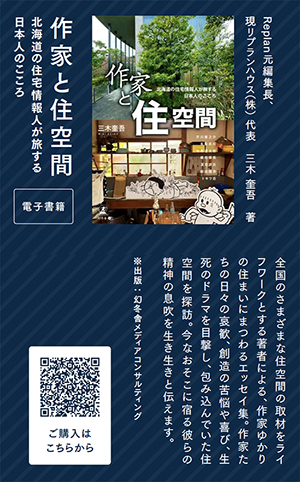


ことしの札幌は異常な高温で推移していますが、それ以上にオドロかされるのが「ヒグマ」情報の爆発ぶり。札幌市は市民の安全最優先という姿勢を見せているのか、スマホへのLINE情報提供で、ほとんど毎日「ヒグマ目撃・痕跡情報」を発信しています。札幌は地形的に南方を山並みが囲んでいるので、かれらの生息域と完全にニアヒアなのですね。
一方ここ数年、ヒグマのそれも若い個体が増えてきて、それらは「人間社会を怖れる」という認知機能が減衰してきているのも事実のようです。ことしの高温はどのように影響するかまだわからないだろうと思いますが、確実にヒグマとの接近遭遇状況は深刻化してきている。先般は道南・福島町で新聞販売員さんがヒグマに襲われ痛ましい死を遂げられましたが、その後くだんの個体をハンターのみなさんが殺処分出来たのに対して、公共団体の電話窓口に執拗ないやがらせ電話を掛けてくるという、悲しい人もいる。ご本人たちは自分は「自然保護」の神聖な行動者だと思われているのでしょうか?
北海道に暮らす人間としては、まことに悲しい思い。
わたしのような一般ピープルはこういう状況を受けて、とにかく避難、逃げる一択の行動選択を心がけております。昨日は、札幌から1時間半ほどの美唄市のアルテピアッツァ美唄で美術鑑賞と思って移動していた。ですが、その彫刻作品の多くは自然道のなかに点在しているために、その通路入口付近にごらんのような注意看板。
行政側の注意看板設置はよく理解できる。一方、こういう状況でなお、彫刻作品を見に行こうと考えるかどうか、ユーザー側としては非常に微妙。わたしとしては、作家の安田侃さんには申し訳ない気もしたけれど、やはりここは退散一択でした。数年前までなんども参観はしているので、ま、再会はいいや、となったのですね。離れて行動していたカミさんにもすぐにケータイで即情報共有・即撤収。
たぶんこういう行動パターンは北海道民に増えざるを得ないでしょうね。
●お知らせ
拙書「作家と住空間」幻冬舎から電子書籍で発刊
お求めはAmazonで。
https://amzn.asia/d/eUiv9yO

English version⬇
[Hokkaido residents immediately retreat upon seeing bear warning signs...]
In response to the killing of a bear that had killed a person in Fukushima Town in southern Hokkaido, there was an outpouring of criticism and angry phone calls based on the idea of “nature conservation” (tears). As a Hokkaido resident, I just feel sad. ...
This year, Sapporo has been experiencing unusually high temperatures, but what is even more surprising is the explosion of information about brown bears. The city of Sapporo seems to be prioritizing the safety of its citizens, as it provides information via LINE to smartphones, issuing “brown bear sighting and trace information” almost every day. Sapporo is surrounded by mountains to the south, so it is very close to the bears' habitat.
On the other hand, in recent years, the number of young brown bears has increased, and it seems to be a fact that their cognitive function to fear human society has been declining. While it is still unclear how this year's high temperatures will affect the situation, it is certain that encounters with brown bears are becoming more severe. Recently, a newspaper delivery person in Fukushima Town, southern Hokkaido, was tragically killed by a brown bear. While hunters were able to euthanize the bear in question, there are also sad individuals who persistently make harassing calls to public agency hotlines. Do these people believe themselves to be sacred guardians of “nature conservation”?
As someone living in Hokkaido, this is truly heartbreaking.
As an ordinary person, I am mindful to prioritize evacuation and escape as the sole course of action in such situations. Yesterday, I was traveling to Arte Piazza Bibai in Bibai City, about an hour and a half from Sapporo, intending to enjoy some art. However, many of the sculptures are scattered along natural paths, so there are warning signs like the one shown here at the entrance to the pathways.
I understand why the administration put up the warning signs. On the other hand, as a user, it is very delicate to decide whether to go see the sculptures in such a situation. I felt sorry for the artist, Yasuda Kan, but I had no choice but to leave. Since I had visited many times before, I thought, “Well, I'll just skip the reunion this time.” I immediately shared the information with my wife, who was acting separately, and we evacuated.
I suppose this kind of behavior pattern is inevitable for Hokkaido residents.
●Notice
My book “Artists and Living Spaces” has been published as an e-book by Gentosha.
Available on Amazon.





































